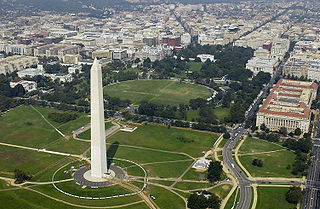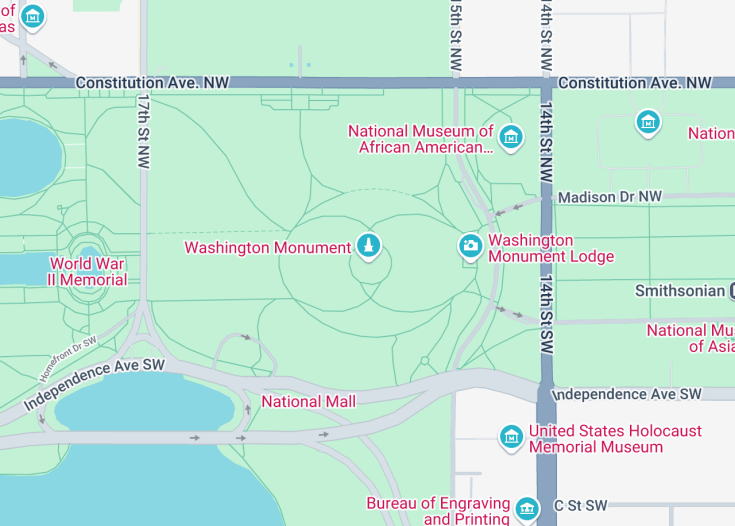The Washington Monument in Washington State stands as a proud symbol of the state’s rich history and commitment to preserving its heritage. Located in the vibrant city of Seattle, this monument, not to be confused with its famous counterpart in the nation’s capital, offers visitors a unique blend of educational experiences and scenic views. Dedicated to George Washington, the state’s namesake and a seminal figure in American history, the monument provides a powerful insight into the values that shaped the United States.
When visiting the Washington Monument in Washington State, consider a guided tour to enhance your understanding and appreciation of its historical significance.
Check the local weather in Seattle before your visit to ensure the best possible experience, particularly if you plan to participate in outdoor activities around the monument.
A Historic Beacon in Washington State
The Washington Monument stands as a towering tribute to George Washington, the United States’ first President. This majestic structure is not only a piece of national heritage but also a symbol of the country’s strength and longevity. Located in Washington, D.C., it attracts millions of tourists each year who come to gaze at its imposing height and grandeur. The monument is an awe-inspiring 555 feet tall making it one of the tallest stone structures in the world. Visitors can enjoy panoramic views of the capital from the top, providing a unique perspective on the city’s layout and the beautiful Potomac River. The surrounding National Mall presents a serene environment where people can reflect on the profound impact of George Washington’s leadership. This combination of stunning architecture, historical significance, and educational potential makes the Washington Monument a quintessential stop for anyone visiting the nation’s capital.
Exploring the Washington Monument
The Washington Monument offers more than just a climb to its peak. A visit usually starts at the ground level, where an interactive museum gives insights into the monument’s construction, history, and the figure it honors. While here, visitors learn about the complex engineering work that went into its building, which began in 1848 and was interrupted by political turmoil and a lack of funds before its completion in 1884. Climbing to the top, either by elevator or by taking the challenging stairwell, is among the most thrilling experiences provided. At various stops along the way, information panels enrich visitor knowledge about historical events related to George Washington and the capital city’s development.
Unique Features at the Monument
Beyond its scale and historical importance, the Washington Monument is home to some lesser-known features that intrigue many visitors. One such feature is the series of commemorative stones embedded within the interior walls. These stones were donated by different states, civic groups, foreign countries, and individuals, each contributing a unique story and design element to the monument. This collection not only adds to the interior’s aesthetic appeal but also serves as a manifestation of the widespread admiration and respect for George Washington. It’s a tangible expression of unity and respect, capturing the diverse essence of a nation built under his leadership.
Explore the grandeur of the Washington Monument
Whether you’re a history enthusiast, a family looking for an educational outing, or simply someone in search of iconic American landmarks, the Washington Monument stands as a must-visit destination. It offers a fascinating glimpse into America’s past and a unique view of Washington D.C. from its apex. The monument attracts visitors of all ages, making it ideal for couples, school field trips, and solo explorers alike.
Discover the perfect time to visit the Washington Monument
The Washington Monument is open year-round, offering a different experience each season. Spring and fall are particularly pleasant, thanks to the moderate weather and the beautiful blooms or fall foliage in the surrounding National Mall. However, early mornings or late afternoons are less crowded and provide a more personal experience.
Annual commemorative events
Visiting during the Independence Day celebrations can be exceptionally memorable. The monument grounds offer a spectacular view of the National Fireworks.
Accessibility and limitations at the Washington Monument
The site is equipped to welcome visitors with different needs.
Accessibility
Limitations
- Strollers are not allowed inside the monument.
- Large bags must be stored in lockers before entry.
- Eating and drinking are prohibited beyond the lobby.
Notes to visitors
- Be prepared for security screening similar to airport standards.
- Visiting involves a significant amount of standing and walking, which might be taxing for some visitors.
- English tours are predominant, but informational pamphlets are available in multiple languages.
General information
Key details for planning your visit to the Washington Monument
Location
Located nearby National Mall, surrounded by landmarks such as the Capitol and the Lincoln Memorial, making it easily recognisable and accessible.
Address:
Independence Ave SW, Washington, DC 20024, United States.
Opening hours
The Washington Monument is open daily from 9:00 AM to 5:00 PM, except for December 25th and January 1st.
How to reach the Washington Monument
Visitors can reach the Washington Monument by various modes of transport from major nearby cities.
Car
Parking is available at nearby public parking lots with variable rates.
| Route | Distance | Travel time |
|---|---|---|
| From Baltimore, MD | 40 miles (64 Km) | 1 hour |
| From Arlington, VA | 5 miles (8 Km) | 10 minutes |
| From Alexandria, VA | 10 miles (16 Km) | 20 minutes |
Metro
D.C. Metro system stations, such as Smithsonian and Federal Triangle, are close to the monument, facilitating easy access.
| Station | Walking Distance | Travel Time |
|---|---|---|
| From Smithsonian Metro Station | 0.5 miles (0.8 Km) | 10 minutes walk |
| From Federal Triangle Station | 0.7 miles (1.2 Km) | 15 minutes walk |
Nearby Attractions
When visiting the Washington Monument, consider exploring these nearby attractions:
- National Museum of American History – 0.8 miles (1.3 km)
- National Gallery of Art – 1 mile (1.6 km)
- Smithsonian National Air and Space Museum – 0.8 miles (1.3 km)
- United States Capitol – 1.8 miles (2.9 km)
- Lincoln Memorial – 1.2 miles (1.9 km)
- National Museum of Natural History – 1 mile (1.6 km)
- White House – 1.2 miles (1.9 km)
- National Aquarium – 1.1 miles (1.8 km)
- National Zoo – 4 miles (6.4 km)
- Thomas Jefferson Memorial – 1.5 miles (2.4 km)
- United States Holocaust Memorial Museum – 0.9 miles (1.4 km)
- United States Supreme Court – 2.0 miles (3.2 km)
Common questions
What is the significance of the Washington Monument in Washington State?
What type of architecture is the Washington Monument in Washington, D.C. known for?
What materials were used in the construction of the Washington Monument?
Are there any special symbols or inscriptions on the Washington Monument?
Can visitors go inside the Washington Monument?
What are some notable features near the Washington Monument?
What is the historical context of the Washington Monument’s construction?
How does the Washington Monument serve educational purposes?

Is the Washington Monument in Washington D.C. worth visiting?
As one of the most iconic structures in the United States, the Washington Monument certainly holds a significant place in American history. Tourists flock here to admire its towering presence and the panoramic views it offers of Washington D.C. from its observational deck. However, it’s important to consider a few downsides when visiting.
One major drawback is the overcrowding, which can significantly detract from the experience. Long lines and wait times are common, especially during peak tourist seasons, potentially leading to a rushed visit. Additionally, while the view from the top is impressive, some might find the interior less engaging.
For those particularly interested in history and architecture, it remains a worthwhile visit. However, for visitors seeking a more tranquil or in-depth cultural experience, nearby alternatives such as the Smithsonian Museums might prove more enriching. Each visitor should consider their own interests and tolerance for crowds when deciding whether to include the Washington Monument in their itinerary.










